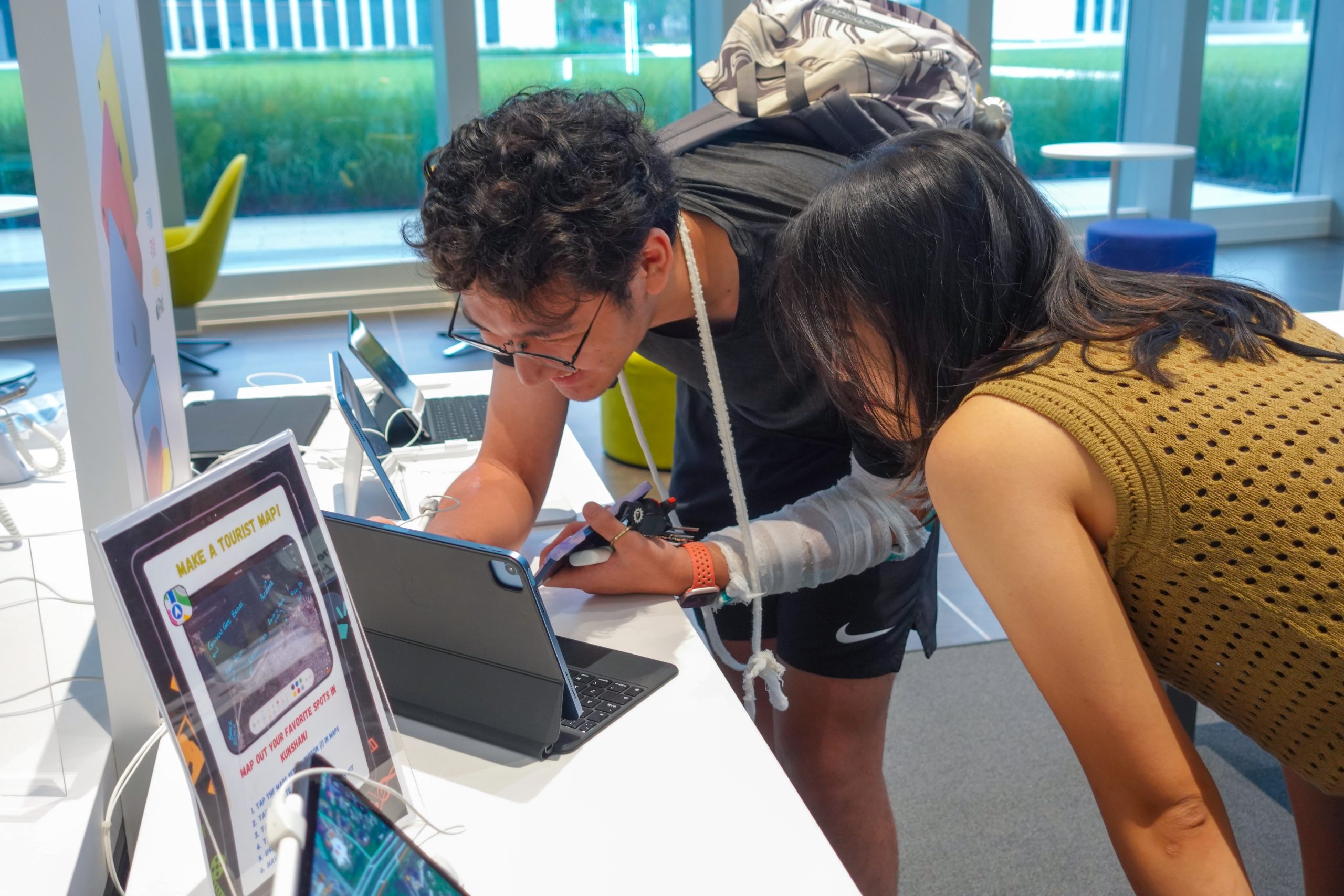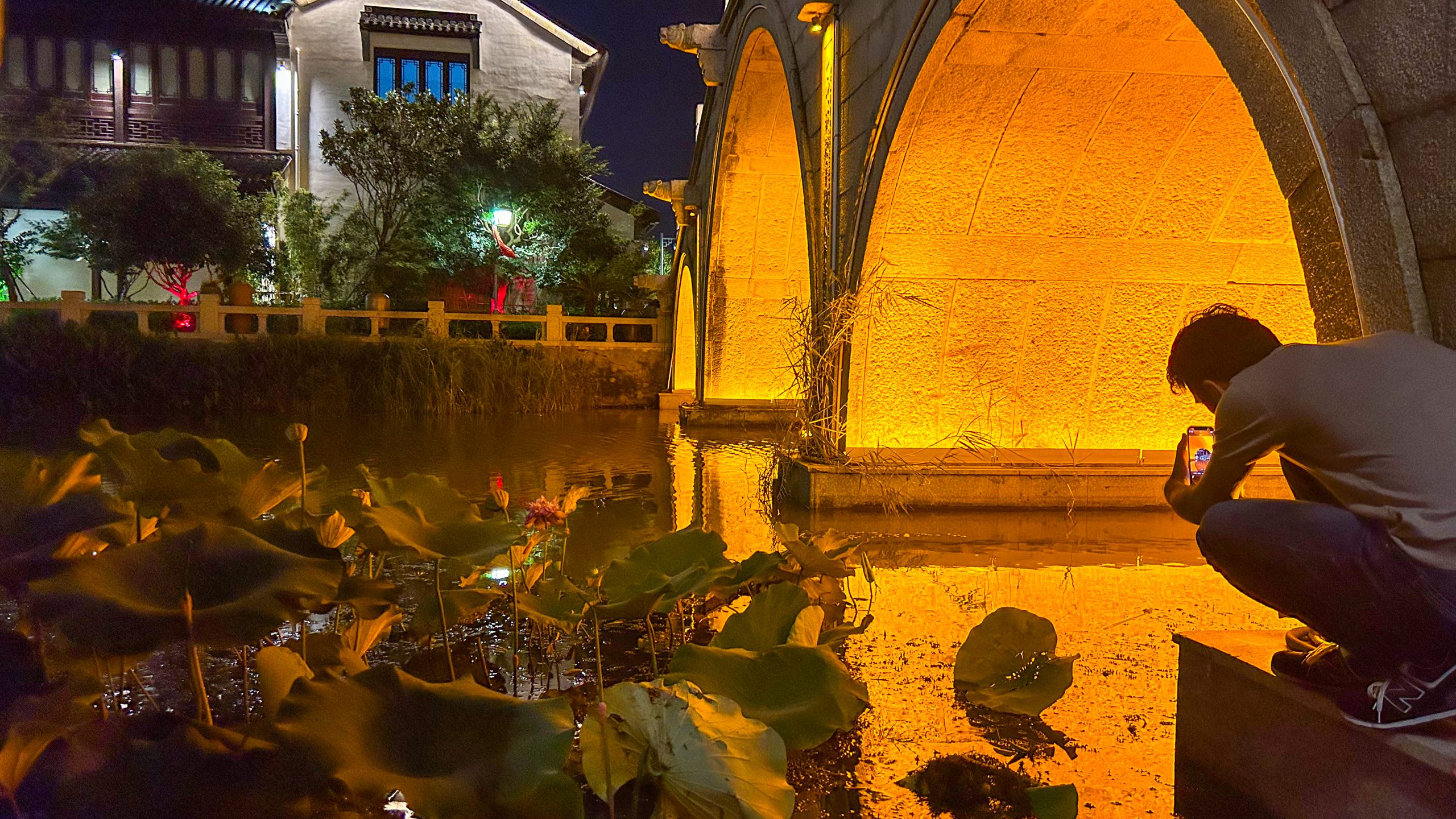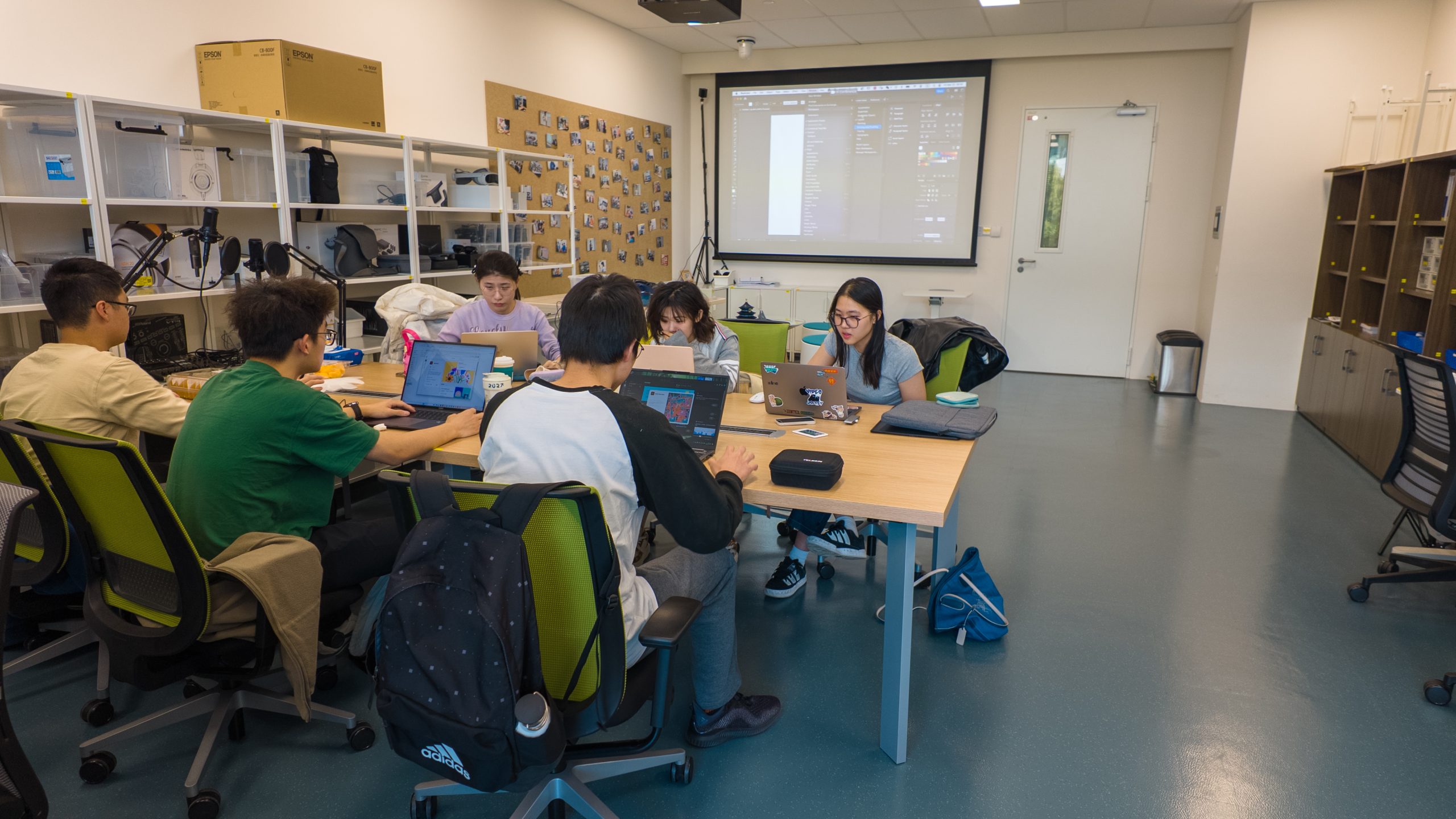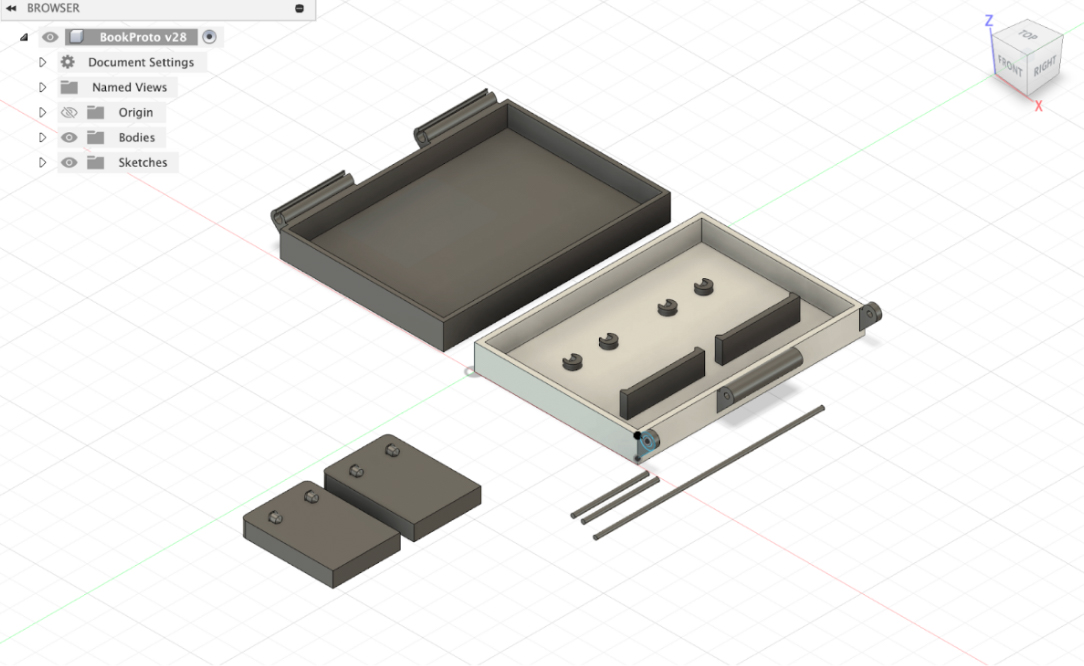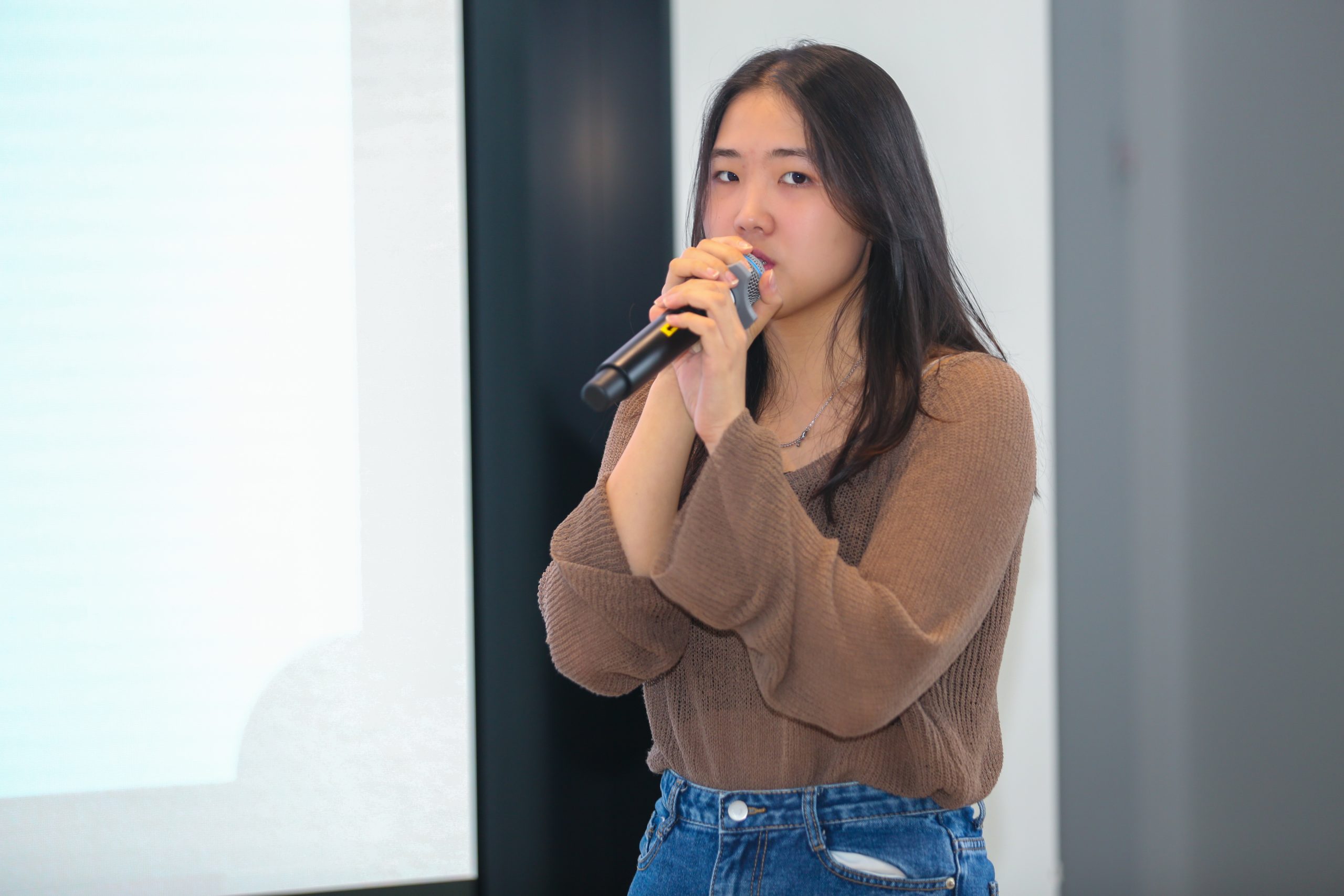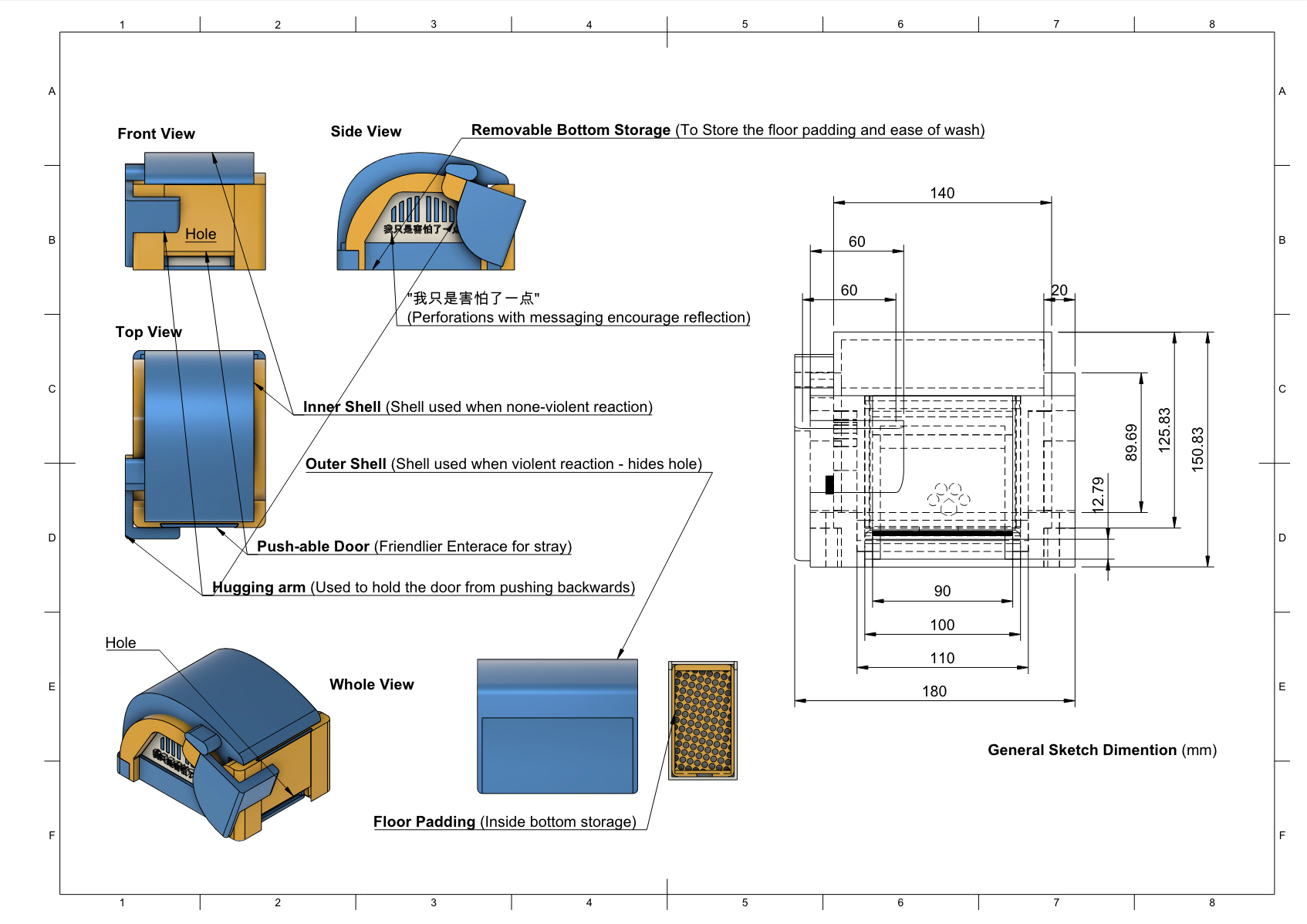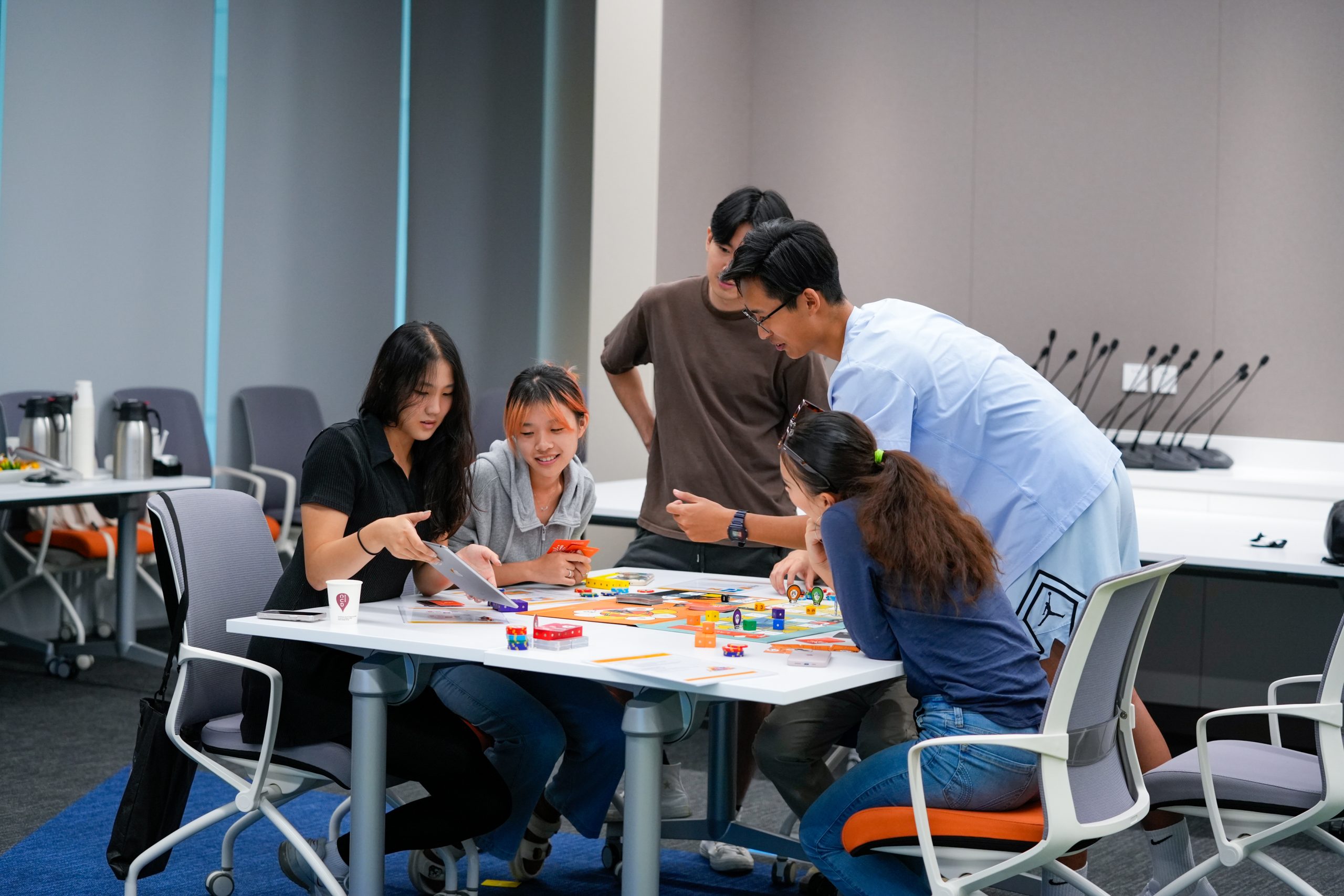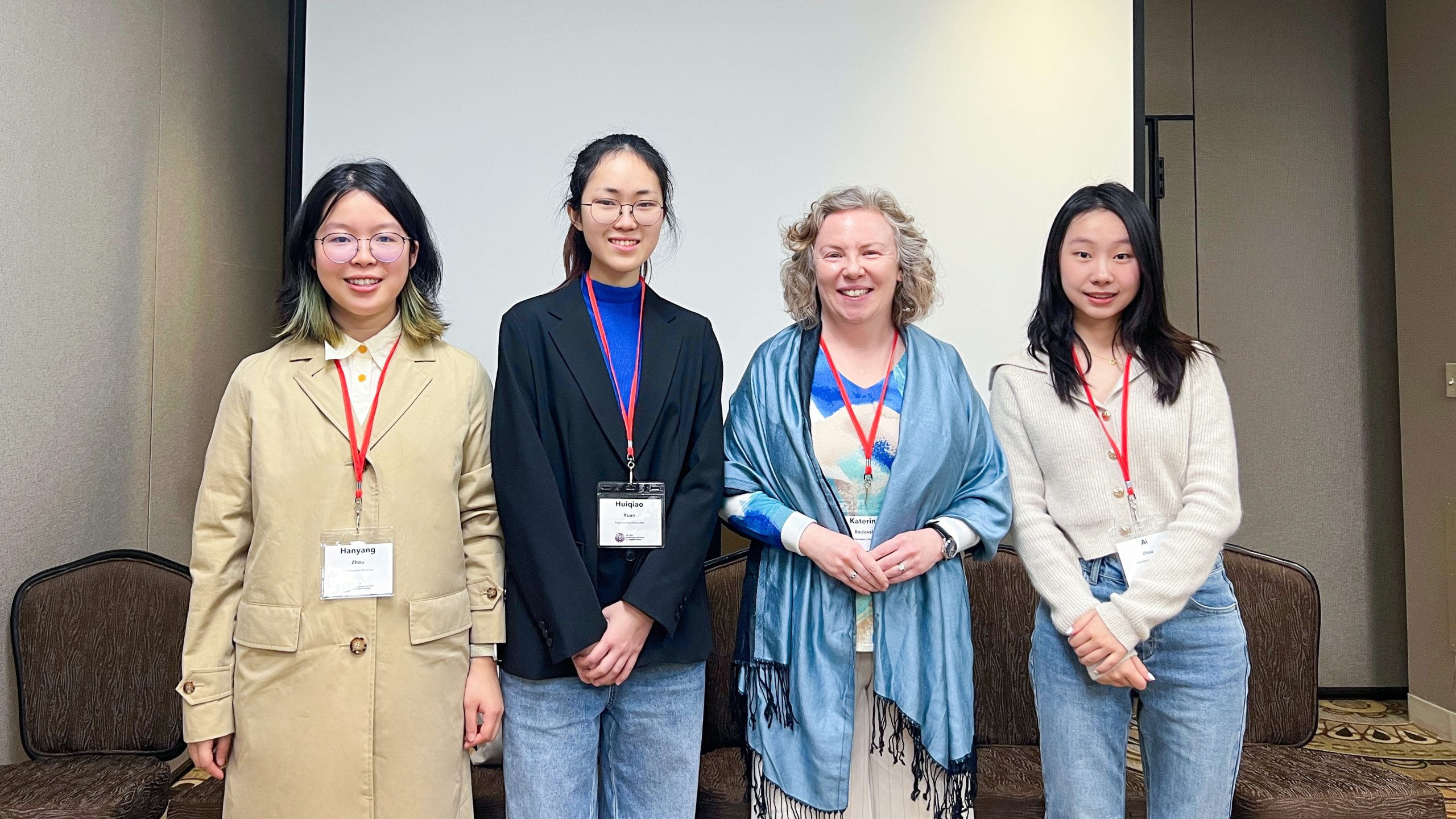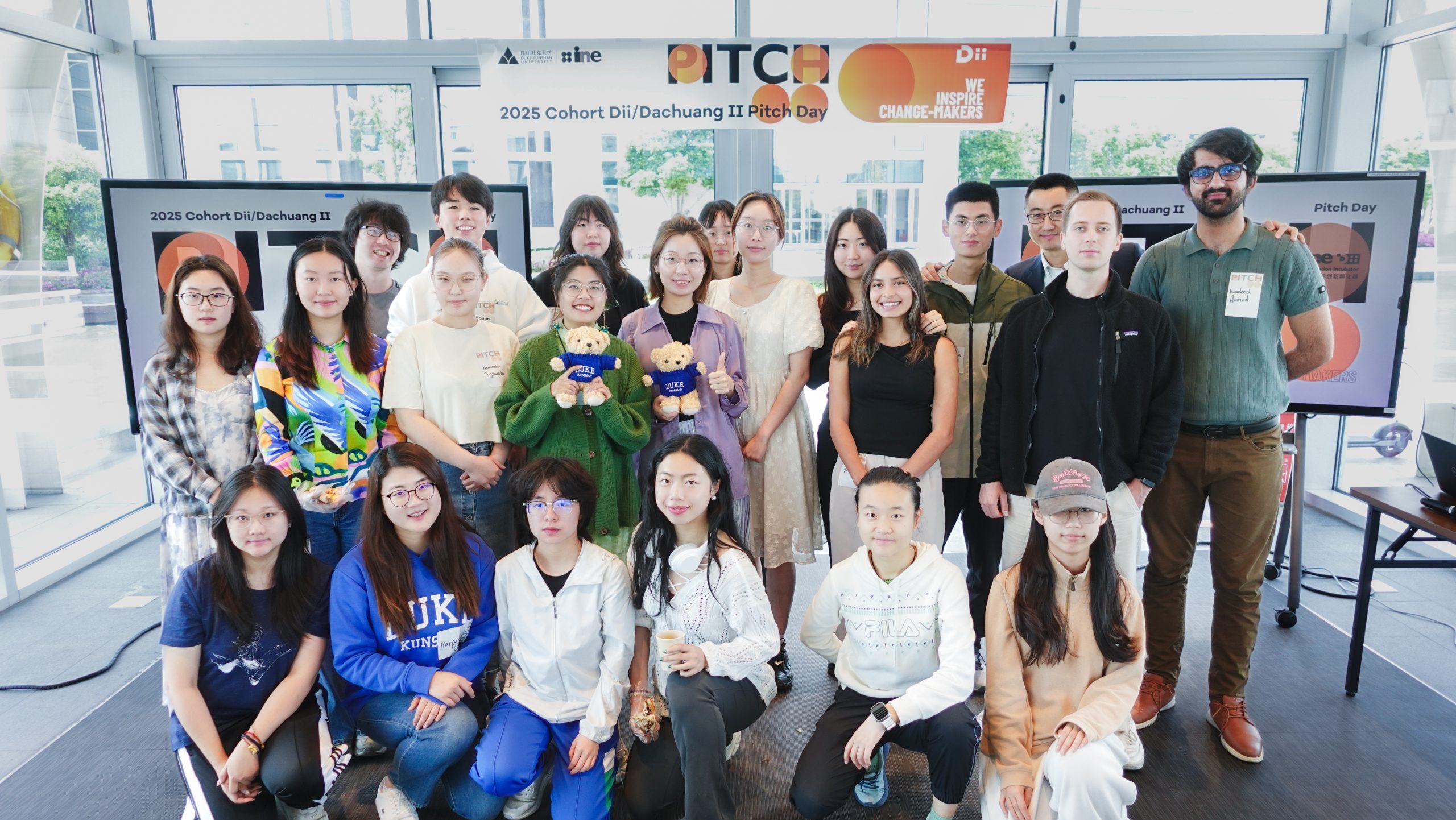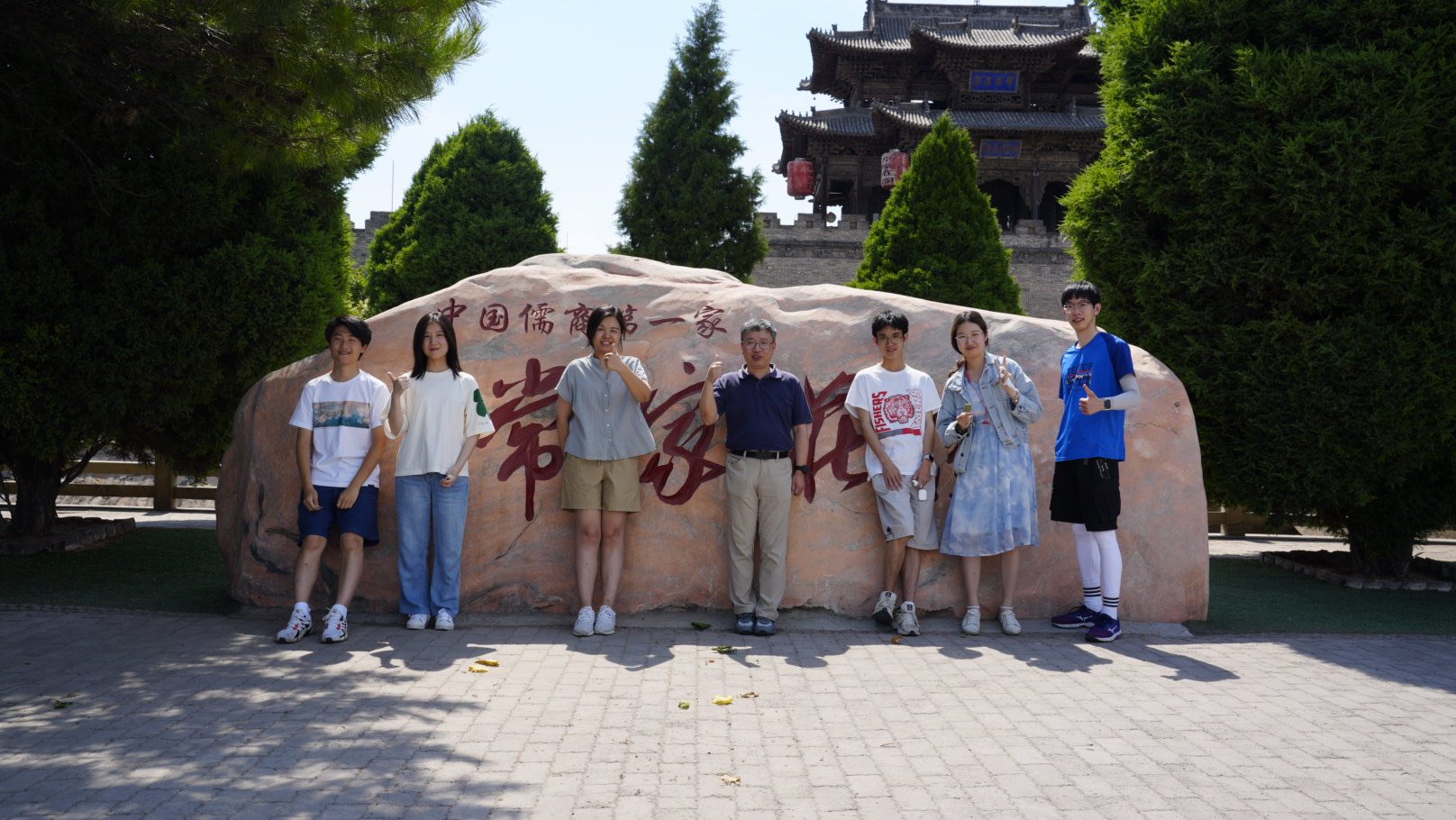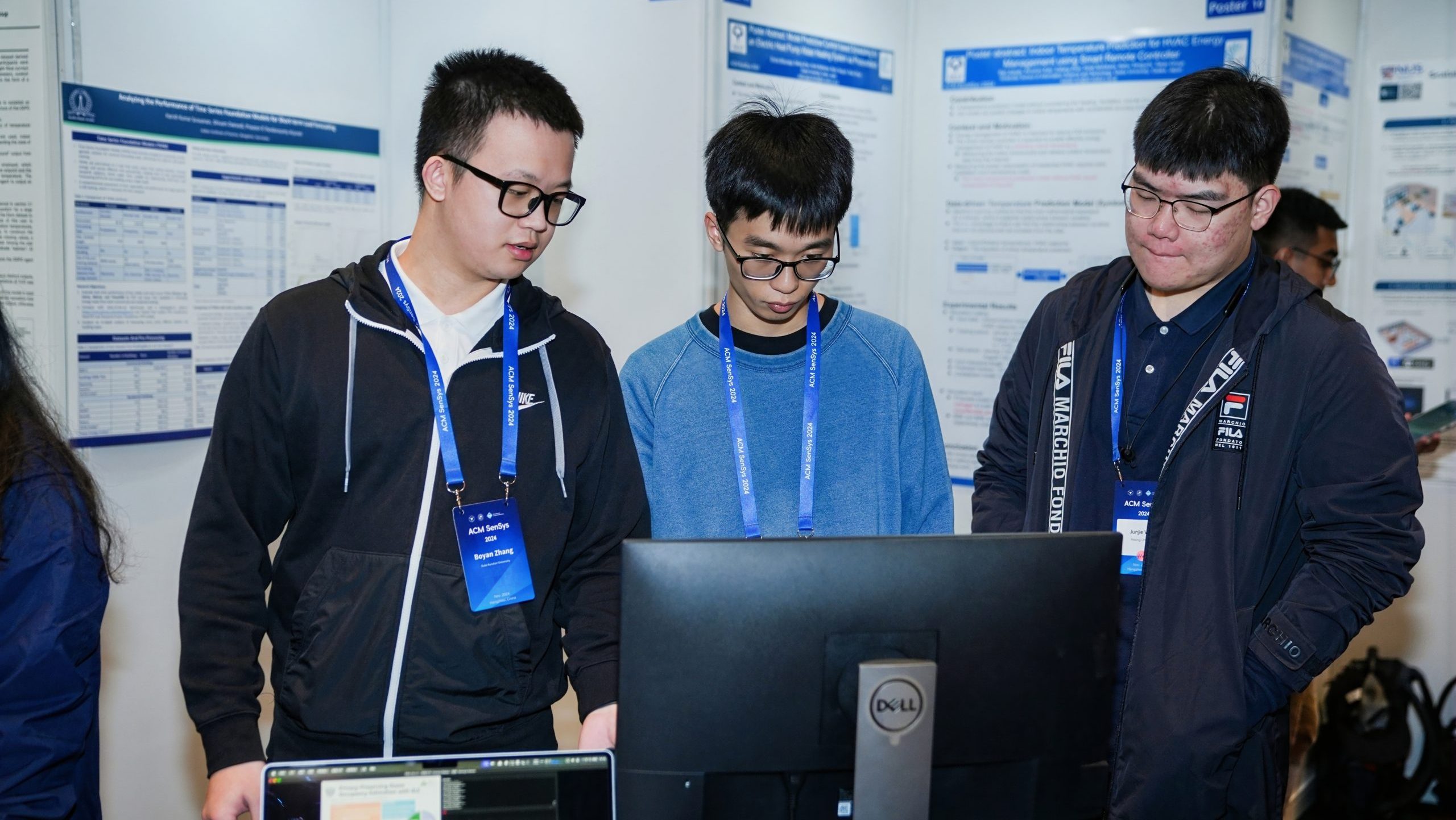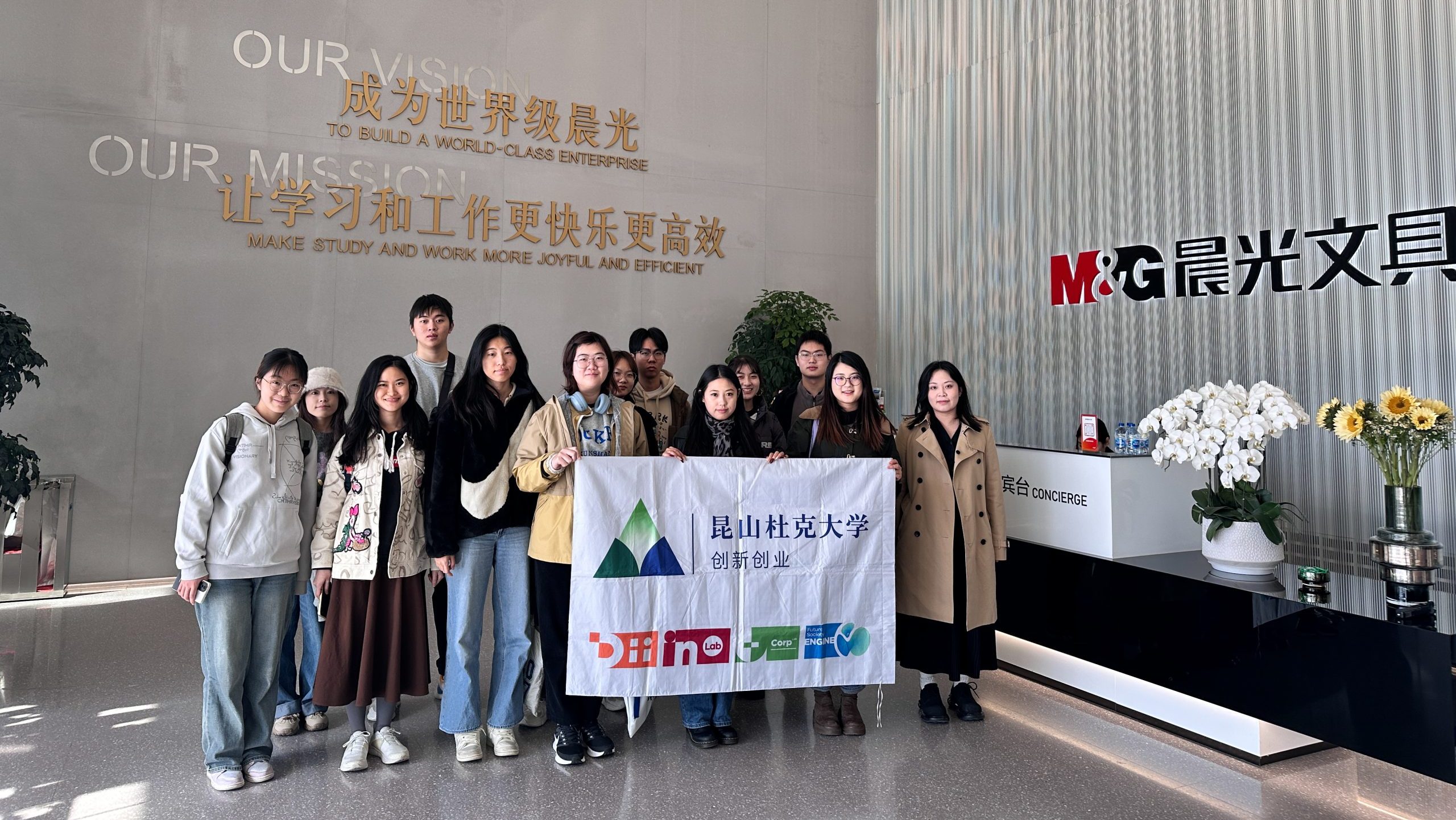Yuri Park’s journey with the DKU Innovation and Entrepreneurship Initiative (InE) began with a simple idea that gradually evolved into something more profound. Initially focused on using creativity to connect people and solving practical, everyday problems through design, she eventually refined her design perspective by exploring the intersection of technology and social issues. Yuri now focuses on using design not only to bring individuals together but also to address broader societal needs, benefiting communities as a whole. Therefore, from pioneering the iCreate Club to launching a research-driven project on street dog welfare, her work has continuously pushed the boundaries of student-led initiatives. How to transform ambitious concepts into actionable change while navigating challenges of motivation, resource allocation, and real-world impact became the central theme of her entrepreneurial experience.
Yuri’s involvement with InE first took place through the iCreate Club, a 2023 Spring University Corporation Lab (U-Corp Lab) project Create4Me: Make the World Change via Intellectual and Creative Challenges, initiative designed to leverage Apple technology for educational and community engagement creatively, Yuri and the team members Taisiya Rozenshteyn, Sardor Akhmedjonov, and Mingjiang Gao, collaborated with Meicheng, aa Apple device provider, securing resources and technical expertise that enriched the club’s initiatives.
The first event, “Diversity Photobooth,” established a creative space for individuals to express their understanding of diversity. Yuri and her team handmade a photobooth using cardboard decorated with paint handprints, an iPhone for capturing photos, an iPad for photo editing, and additional decorations to enhance the experience. This event taught Yuri the importance of hands-on creativity and interactive technology in encouraging authentic self-expression and celebrating diversity.
Building on the concept of familiar technology becoming more interactive and accessible, Yuri organized a series of dynamic events themed around the idea of travel. “Make a Tourist Map” utilized Apple Maps creatively as participants recommended personal favorite locations ranging from eateries to scenic spots, sharing their experiences and connecting with others.
Following this, the “Travel Story Relay” event employed Apple Notes as participants collaboratively wrote a mythical journey in segments. Participants joined at different timestamps, adding their unique contributions and immersing themselves in an evolving narrative. The two events highlighted for Yuri the value of integrating everyday technology into collaborative experiences that foster deeper community connections.
The photo scavenger hunt in Bacheng emphasized the capabilities of the iPhone’s night-shift feature, creating an immersive nighttime exploration challenge. This activity reinforced the importance of teamwork, communication, and friendly competition in fostering deeper connections among diverse participants.
The final event, a film challenge themed around the Lunar New Year, constrained participants to filming exclusively with their iPhones. However, with seeing the work of the students, reinforcing what was taken away in the photo scavanger event, Yuri discovered that creative potential can thrives within set boundaries, pushing individuals to innovate beyond comfort zones, when it is with people as a team.
Through these experiences, Yuri gained a deeper understanding that creativity and innovation are driven primarily by people—especially through effective teamwork—rather than by technology itself, irrespective of the communication methods or tools involved. Motivated by this insight, Yuri sought to move beyond simply organizing events to foster community. She wanted to explore how designed products could build communities as well. This led to her next project: creating a 3D-printed bookcase tailored specifically for design beginners to document and reflect upon their creative journeys.
Under the support of DKU Innovation Lab (InLab), by incorporating 3D printing into the book’s case design, the open-source nature of the format reinforces the essence of zines, where adaptability and accessibility are central. Therefore, for the people who have access to 3D modeling software and the printing machine, the customizability of 3D-printed designs mirrors the ethos of zine culture, allowing users to modify and personalize the structure, thereby emphasizing a commitment to preserving the creative process and pushing the boundaries of design. This approach also reflects the impact of copy machines, which, as Eichhorn notes, “extended who could participate in the reproduction of images and texts, as well as the types of materials that could be reproduced. They extended who and how people could participate in print cultures and the process” (Eichhorn, 5). Just as the arrival of copy machines in the 1960s and 1970s blurred the lines between writers, readers, and publishers, the open-source 3D-printed book structure dissolves traditional distinctions between creators and users, fostering a more interactive and evolving creative space.
After successfully creating a product aimed at achieving a greater good—not limited merely to entertainment and collaboration—Yuri realized it also served to build an inclusive, unbounded community while provoking deeper, philosophical discussions. These conversations explored questions such as whether the creative process itself requires more thoughtful consideration and whether 3D printing might one day become as commonplace as paper printing, significantly improving product accessibility and distribution. However, in developing this product, Yuri began to question if design could transcend its role as merely an accessory for creative endeavors and instead address genuine global needs. This reflection inspired my next project, which considers non-human audiences as a potential new dimension in design.
cReATe Video Link: https://drive.google.com/file/d/1Inebo1Y-nLAX_I837h60Flznmds-wxd9/view?usp=sharing
As her final project with InE, Yuri focused on street dog welfare and rabies awareness. Through secondary research examining the cultural roots of disdain toward stray dogs in China and the impact on government-led control measures, Yuri identified a critical gap: while policies dictate the management of stray dogs, they do little to shift deeply ingrained public perceptions of strays as undesirable. This widespread negative perception carries significant societal implications, particularly regarding rabies—a disease with an absolute fatality rate that disproportionately affects rural areas. Recognizing that the issue extended beyond disease control, Yuri noted that the normalization of violence against stray dogs perpetuates cycles of aggression and desensitization among children. To address these systemic challenges, Yuri applied for an innovation challenge and was subsequently admitted to the DKU Innovation Incubator (Dii). With Dii’s funding support, she attended a pet industry expo in South Korea for cross-cultural learning. Inspired by this experience, Yuri subsequently designed a humane capture cage using Fusion360. Ultimately, what began as an exploration of an overlooked social issue evolved into her signature project, continually shaped by community-driven insights and dedicated engagement.
Throughout her journey with InE, Yuri found that InE’s support extended far beyond funding. It became a vital network for validation and outreach. “If we can convince InE, we can convince others,” she remarked, underscoring how the center helped refine and solidify project ideas. When direct assistance wasn’t available, InE provided guidance on where and how to seek additional support, making it an invaluable bridge between students and external resources. Beyond logistics, Yuri found immense value in the sense of community InE fostered. Within this collaborative environment, she connected with peers who shared similar aspirations, creating an atmosphere conducive to mutual learning, encouragement, and support. Access to practical resources such as 3D printing and filmmaking equipment significantly accelerated her journey from concept to tangible outcomes.
Throughout her experiences, Yuri gained critical teamwork, communication, and strategic planning skills. Working closely with teammates and faculty mentors, she learned the importance of proactive communication and setting clear expectations to drive projects forward. One of the biggest challenges she faced was maintaining long-term motivation. “Pushing a project forward requires strong internal motivation,” she noted. To help students stay on track, InE implemented structured deadlines, a strategy Yuri found instrumental in maintaining progress.
Her ability to adapt to unforeseen obstacles became another defining aspect of her growth. During a summer project, an issue with Arduino components forced her to pivot to 3D modeling instead. Rather than seeing it as a failure, she embraced the opportunity to develop a new skill. Each challenge she faced reinforced her ability to turn setbacks into stepping stones, shaping her not only as an innovator but also as a leader.
Reflecting on her journey, Yuri strongly advocates embracing experimentation and taking action without fear of failure. She believes that failure is an essential part of the innovation process, emphasizing the importance of learning through experience. “Fail often, fail fast,” she says. She urges students not to let their ideas remain as imagination but to actively seek opportunities to turn concepts into reality. By leveraging InE’s diverse resources and supportive community, she advises students to build a solid foundation before venturing into independent projects.
“Innovation isn’t just about having ideas; it’s about execution, resilience, and learning from every step of the journey,” Yuri reflects. As she continues to push the boundaries of student innovation at DKU, her story serves as an inspiration for future change-makers looking to make a meaningful impact.




